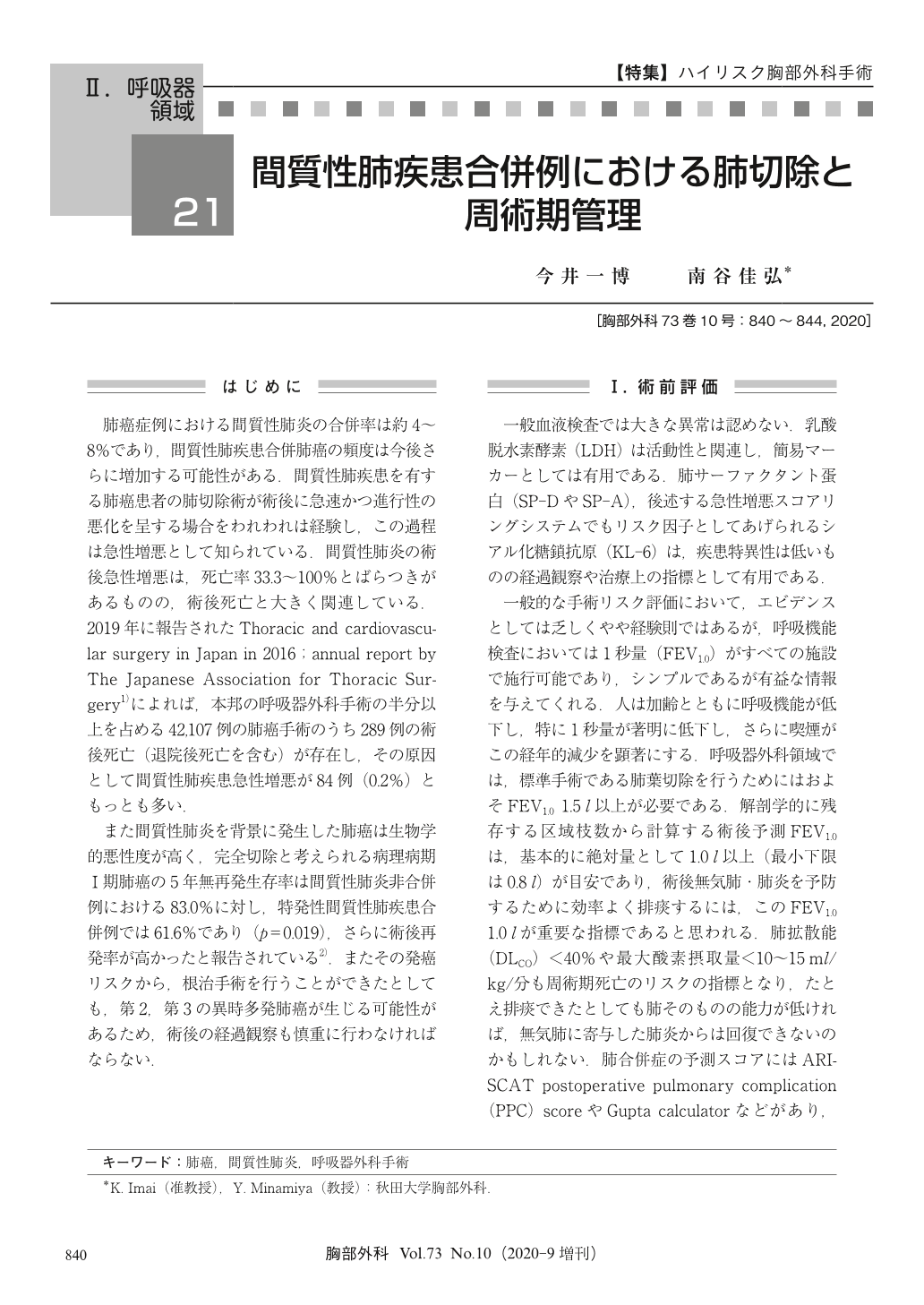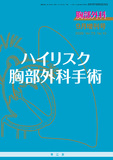Japanese
English
- 有料閲覧
- Abstract 文献概要
- 1ページ目 Look Inside
- 参考文献 Reference
肺癌症例における間質性肺炎の合併率は約4~8%であり,間質性肺疾患合併肺癌の頻度は今後さらに増加する可能性がある.間質性肺疾患を有する肺癌患者の肺切除術が術後に急速かつ進行性の悪化を呈する場合をわれわれは経験し,この過程は急性増悪として知られている.間質性肺炎の術後急性増悪は,死亡率33.3~100%とばらつきがあるものの,術後死亡と大きく関連している.2019年に報告されたThoracic and cardiovascular surgery in Japan in 2016;annual report by The Japanese Association for Thoracic Surgery1)によれば,本邦の呼吸器外科手術の半分以上を占める42,107例の肺癌手術のうち289例の術後死亡(退院後死亡を含む)が存在し,その原因として間質性肺疾患急性増悪が84例(0.2%)ともっとも多い.
Interstitial lung diseases (ILDs) are associated with an increased risk of lung cancer, and pulmonary resection is well known to be associated with high postoperative morbidity and mortality in lung cancer patients. Postoperative mortality rate of acute exacerbation (AE) was reported 33.3~100%. Sex, CRP, KL-6, %vital capacity (VC), forced expiratory volume in 1 second (FEV1.0), history of AE, preoperative steroid use, and surgical procedures were identified as possible risk factors of AE in the univariate analyses by the data obtained from patients with non-small cell lung cancer who had undergone pulmonary resection and presented with a clinical diagnosis of ILD between January 2000 and December 2009 at 64 institutions throughout Japan. Multivariate analysis using these factors identified surgical procedures except for wedge resection, history of AE, KL-6, %VC, and male sex as independent risk factors. A score by risk prediction for AE was 5 X (history of AE)+4 X (CT:UIP pattern)+3 X (gender:male)+3 X (preoperative steroid use)+2 X (KL-6>1,000 U/ml)+1 X (VC≦80%). The predicted probability of risk score 15~22 is>0.25, and risk score 11~14 is 0.1~0.25. We can use a simple risk scoring system comprising seven parameters to identify high risk patients for AE, and provide essential information to support fair and objective clinical decision-making by thoracic surgeons.

© Nankodo Co., Ltd., 2020


